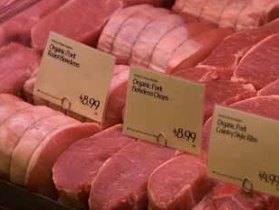Switching to organic pork production: Pros and cons

Research results from the Organic Trade Association show sales of United States organic products, including pork, grew more than 17% from 2007 to 2008, and the consumer demand is expected to continue despite the current economic downturn.
This may lead some pork producers to consider a change to that type of production.
Iowa State University (ISU) animal science professor Mark Honeyman said consumer desires can lead to increased demand for organic pork products.
“Many US consumers of pork are interested in issues concerning the environment, food safety, pig welfare and pig farm ownership and structure,” Honeyman said. “These consumers may be willing to pay more for pork from farmers who also are concerned about these issues.”
Organic pork production costs
Consumers typically pay more for organic pork, primarily because organic pork costs more to produce. This increased price tag is at least partially due to lower feed efficiency and higher feed costs in organic production, Honeyman said. As of early May, the price of organic corn is around $8 per bushel, compared with the price of traditional corn at around $3.50 per bushel.
©
Both Honeyman and ISU agricultural economics professor James Kliebenstein said there are numerous financial benefits to organic pork production, including a market segment with higher value pork that continues to grow. Socially, organic producers could have the opportunity to get to know their consumers, and may be more able to use skills and labour of more family members in the operation.
©
However, the change to organic production is not without its liabilities. Kliebenstein said some production factors can negatively affect an organic producer’s financial bottom line.
©
“The pigs per litter and litters per sow per year figures are lower, and along with a generally lower productivity, this adds to the cost of organic pork production,” he said.
©
Kliebenstein said producers who are considering going to organic production need to objectively and accurately assess their own situation and operation, and evaluate both potential advantages and risks.
More variable
“Organic pork production is more variable and less predictable and there are not as many tools to keep costs low,” Honeyman said. “In conventional pork, we’ve worked many years to keep costs low. This variability in production creates problems on the marketing side. Consumers desire a consistent quantity of fresh product.”
©
Honeyman said producers who want to take a serious look at switching to an organic system should consider several factors.© For example, do they have a reliable source of organic feedstuffs? Is there an available and steady market for their products? Because no antibiotics are allowed, pig health can be a financial concern, as can the costs associated with organic certification and its regulations.
©
Producers who want to make a change in their operation, yet can’t financially justify moving to an organic system might want to consider the niche segment of “natural pork.” This system allows the use of traditional feeds and de-wormers, and allows for a less drastic operational change. Natural pork has a more established market and can provide producers with a more readily available market that experiences fewer market fluctuations.











